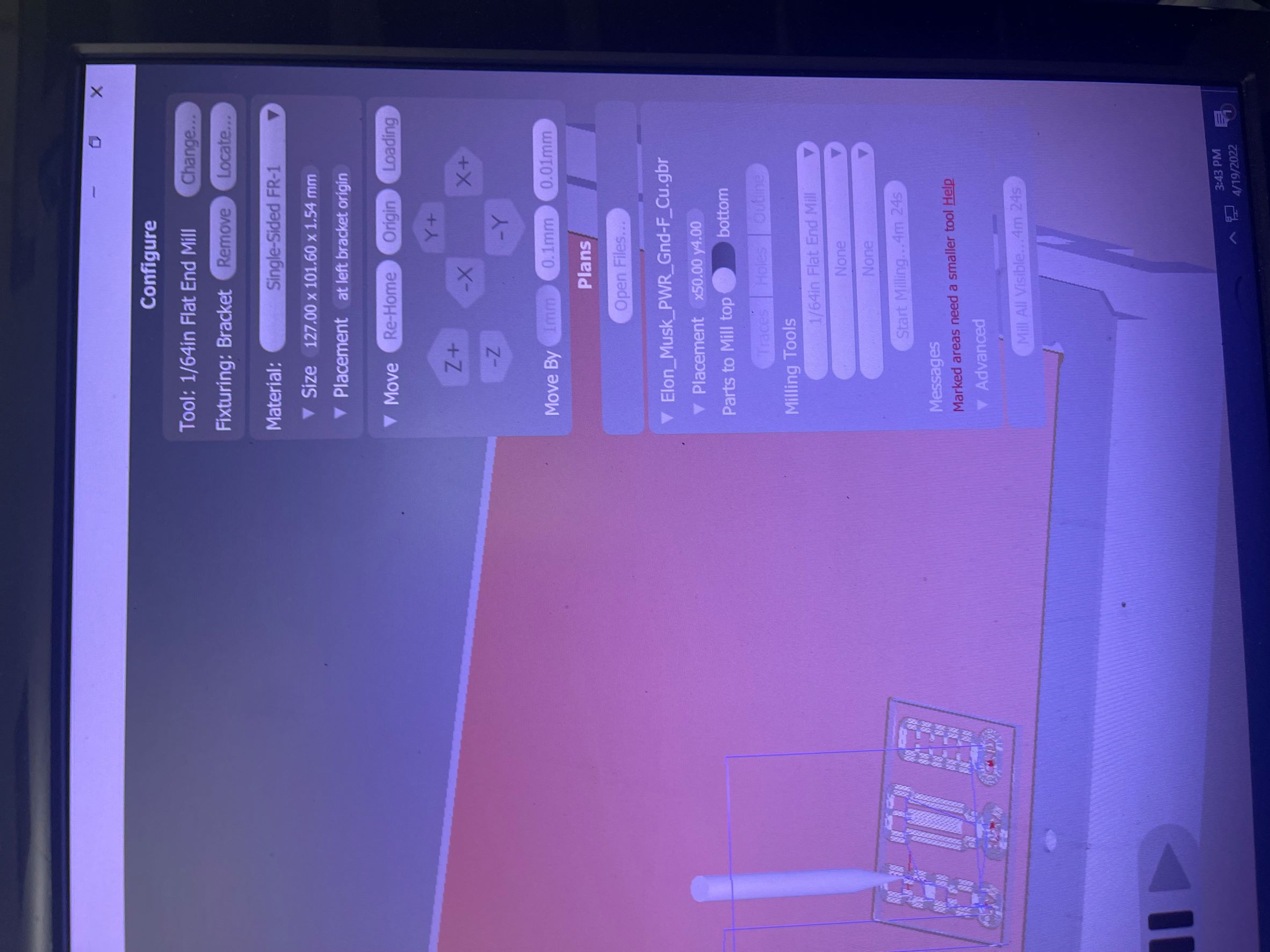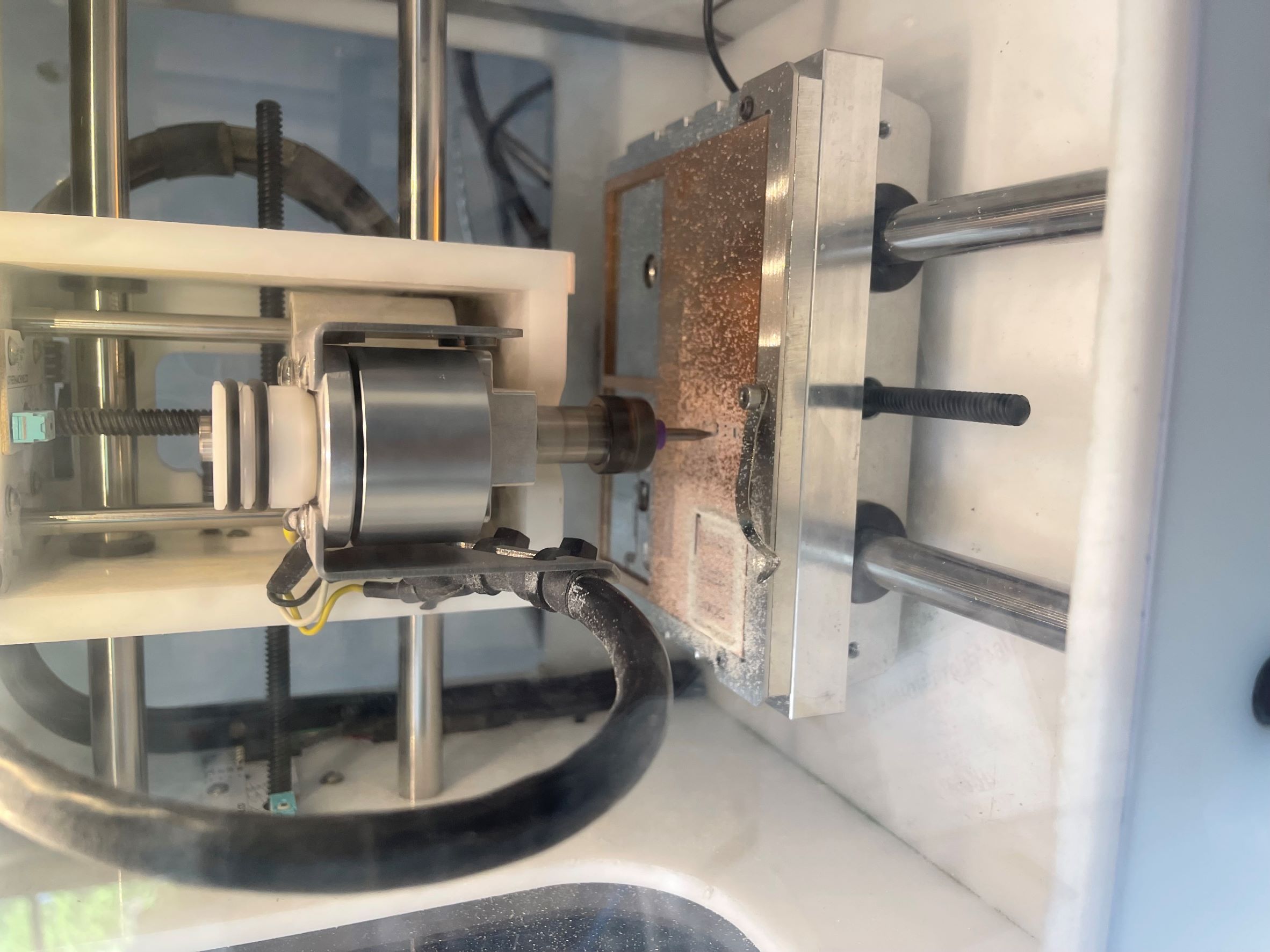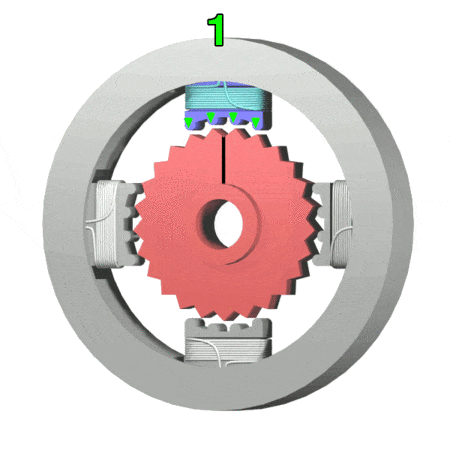12. Machine Week¶
This week I worked in a group with Aaron Logan, Alaric Pan, and Jack Donnelly. For our machine week we had a multitude of ideas but we ultimately went with an “Elon Musk Tracker”. I was specifically excited for this week because I went way out of my comfort zone and tried new thing I never had before. This week gave me the chance to figure things out on my own and strengthen my weak points. This week I worked on:
- Getting the stepper motors to work with the Raspberry Pi
- The longitude and latitude to x and y coordinates conversion
- 3D CAD Modeling multiple pieces
- 3D Printing Pieces
- Cutting the steel rods
- Cleaning and sanding the steel rods
- Using the Shopbot to cut the wood base
- Sanding the milled wood base
- Milling the board for common ground and power
- Putting the final design together
- Creating the google slides
Our documentation is located Here.
This week I truly stepped out of my comfort zone with the code and using a Raspberry Pi. I have used a Raspberry Pi years ago in middle school so using it again was a whole new challenge. Then looking through and trouble shooting code and finding code that would work was very challenging. Coding was one of my weakest points but this week definitely grew my confidence in it. I have also not worked with a stepper motor at all before so that was new. Although there were many diagrams I found that I found that helped my understand how to use one and the internal functions of the motor. Then the 3D modeling was a little frustrating because the dimensions always had to be perfect. I used a caliper and gave some wiggle room on the stepper room size based on the size the caliper gave me. Although the final design still turned out a little small. Although that was fixed relatively easily with a drill, it was still somehow an oversight on my part that I need to look back on. Then the 3D printing was easy. I have 3D printed a lot so that part was not a problem. I had the infill very high for the pieces because the stepper motors are relatively heavy.
Then cutting the steel rods is something I have never done before. It required a lot of patience and attention but I was excited to learn how to use the band saw for the first time. Then the rods still had some jagged edges so I had to sand them. We used oil with the bandsaw so I cleaned the rods with water, alcohol, and a paper towel. Next I have run the shopbot many times so I felt very comfortable doing that with the help of my workflow. Then I used a rough grit sandpaper with the electric sander to get rid of a lot of the blemishes in the wood then a fine grit to make it smooth like glass.

I also milled the board for the common ground and power. It was a simple board so I just used a 1/64th bit for the traces and a 1/32nd bit for the outline. I milled two just in case. That was a good idea because the first apparently did not get soldered correctly.


Then I helped the group put together all the final pieces of the project. Then I also created and did the google slides. The slides took a lot longer than expected but it turned out very beautiful. This project in all had a few design flaws like we could have made a place to use the stepper motor mounting holes in our 3D CAD designs. This was an oversight but not extremally detrimental. Also some of our metal rods got a little bent but it didn’t effect out project heavily. This project is something I would definitely like to continue to work on After-Fab with my group to improve.
